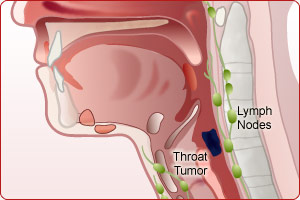Source: bionews-tx.com
Researchers at the Massachusetts General Hospital (MGH) and Massachusetts Eye and Ear Infirmary have developed a new way to predict the survival rate of patients who have squamous cell carcinoma of the head and neck, thanks to a study partially funded by a CPRIT grant. One of the problems with treating cancer is the degree of genetic heterogeneity within a tumor. What this means is that there are sub populations of tumor cells within a given tumor that have different mutations. This makes the cancer difficult to treat because some cells due to their different mutations will be resistant to the same treatment. According to Edmund Mroz, PhD at the MGH center for Cancer Research (lead author of a report in Cancer on May 20, 2013), this new method of measuring genetic heterogeneity can be applied to a wide range of cancers. (Additional co-authors included Curtis Pickering, PhD, and Jeffrey Myers, MD, PhD, both from the University of Texas M.D. Anderson Cancer Center.)
Prior to this study, genes and proteins that are involved with treatment resistance have been identified, however, there has been no way to measure tumor heterogeneity to predict patient survival. Mroz and his group of researchers working in the lab of James Rocco, MD, PhD at MGH developed this new measure by looking at advanced gene sequencing data to calculate a number that indicates the genetic variance found in sub populations of cells within a tumor. They dubbed this new procedure as the mutant-allele tumor heterogeneity (MATH). This measure of heterogeneity has the ability to predict not only the number of mutations present but how widely the particular mutations are shared within different sub populations of tumor cells. This research was published in Oral Oncology (March 2013) and was only able to demonstrate that patients with known factors predicting poor outcomes had lower survival rates or what is known as high MATH scores. So, further research was needed.
Mzor and colleagues have now looked at the tumors from 74 patients that had squamous cell head and neck cancer and analyzed their genetic data. These patients had completed their treatment and researchers had the outcome data as well. The MATH measure was applied and these researchers found that higher MATH scores were correlated with shorter survival and with patients who had genetic heterogeneity. This demonstrates that the MATH scores were well correlated with outcomes more so than earlier predictions based on what was known at the time as identifiable risk factors.
At the moment, the take home message is that MATH values along with clinical findings can help predict survivability based on tumor cell heterogeneity. Furthermore, MATH may be able to determine what type of therapy the patient is best suited for. For example, if their MATH score is high, this calls for therapies that are more aggressive to ensure tumor cell resistance doesn’t occur. On the hand, patients who have low MATH scores, need less aggressive therapeutic approaches.


Leave A Comment
You must be logged in to post a comment.